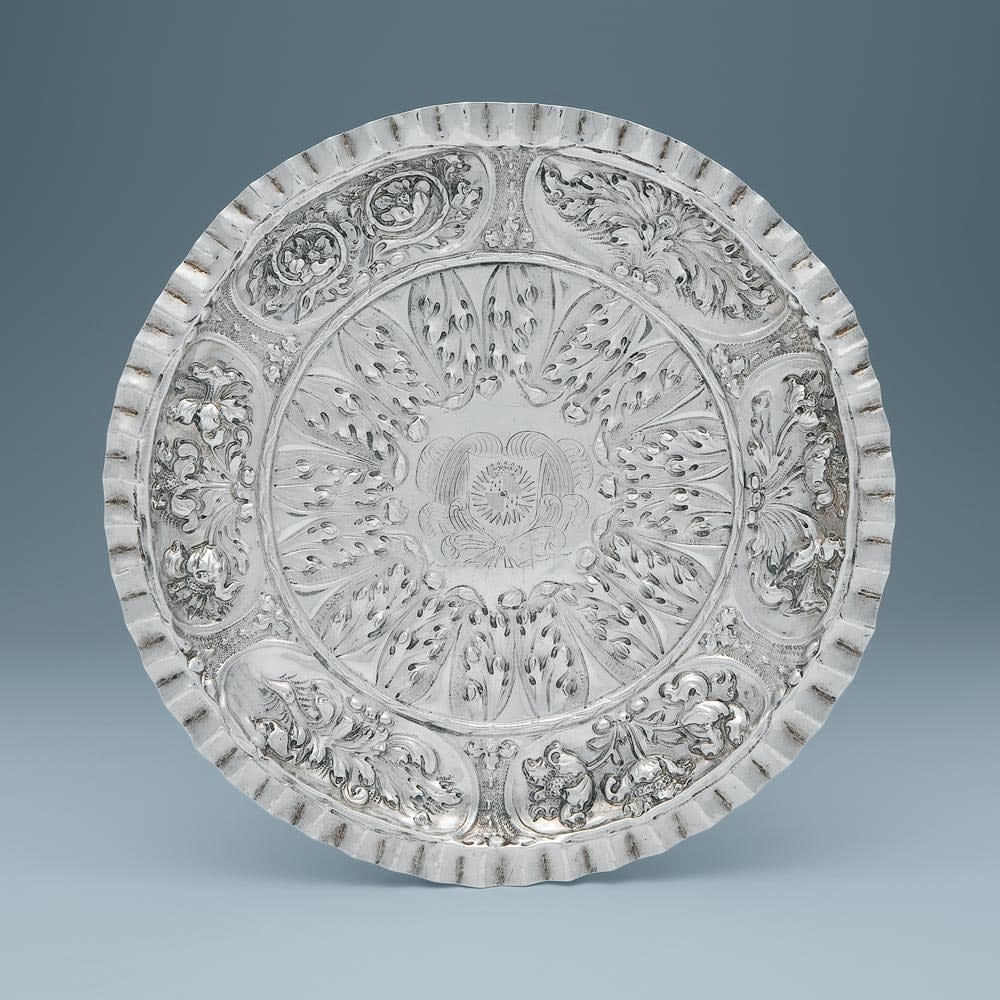
unmarked
A Rare Charles II Antique English Silver Tazza, c. 1675
Height: 1.75 in. (4.45 cm.)
Diameter: 9.5 in. (24.13 cm.) Weight: 11 oz. 10 dwt.
Diameter: 9.5 in. (24.13 cm.) Weight: 11 oz. 10 dwt.
London
V7785
$ 25,000.00
Circular on pedestal foot, embossed with bands of stiff leafage and scrolling flowers, engraved at center with a coat of arms below an Earl's coronet all within a plumed cartouche,...
Circular on pedestal foot, embossed with bands of stiff leafage and scrolling flowers, engraved at center with a coat of arms below an Earl's coronet all within a plumed cartouche, engraved under base with a coat of arms within a lozenge and with the initials EP.
The arms are those of Stanhope for Philip Stanhope (1673-1726), second son of the Second Earl of Chesterfield. His older brother having died in 1703, Philip became the Third Earl in 1714, at which time the arms on this piece were up-dated with the addition of the Earl's coronet. The Fourth Earl is famous for the essays he wrote to his son.
The auricular decorative style came England in the mid-late 17th century from Flanders and Holland. Only a handful of English silversmiths were able to work in this demanding and complex fashion. Foremost among them was the immigrant John Cooqus, son-in-law of Christian Van Viannen and goldsmith to Charles II and James II. As a foreigner, Cooqus was never permitted to register a mark with the Goldsmiths Hall, and very few of his pieces are fully hallmarked. The absence of marks on this piece suggests the possibility that it could be the work of Cooqus.
The arms are those of Stanhope for Philip Stanhope (1673-1726), second son of the Second Earl of Chesterfield. His older brother having died in 1703, Philip became the Third Earl in 1714, at which time the arms on this piece were up-dated with the addition of the Earl's coronet. The Fourth Earl is famous for the essays he wrote to his son.
The auricular decorative style came England in the mid-late 17th century from Flanders and Holland. Only a handful of English silversmiths were able to work in this demanding and complex fashion. Foremost among them was the immigrant John Cooqus, son-in-law of Christian Van Viannen and goldsmith to Charles II and James II. As a foreigner, Cooqus was never permitted to register a mark with the Goldsmiths Hall, and very few of his pieces are fully hallmarked. The absence of marks on this piece suggests the possibility that it could be the work of Cooqus.